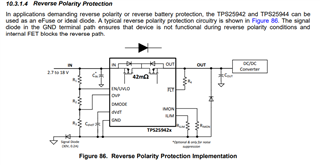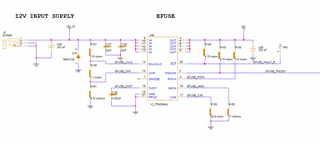Tool/software:
I need a solution that allows a user to attach a 12 volt plug to my board and have a circuit will protect against over voltage, short circuits, and reverse voltage. Once power is applied and the level is valid, the circuit will enable my the 3v3 regulator (TPS62130ARGTR) in my design. Once the 3v3 is up, other regulators will turn and the total current draw should be around 3-4 amps. I think that the TPS25947 will do what I want but I have a few questions:
1) The power supply is a wall wart and has about a 3 foot cable. The input caps on my buck regulator are ceramic so I have added a 330 uf polymer cap so that the input of the regulator doesn't oscillate. If I put the TPS25947 down, would the 330 uF need to be moved to the input side of TPS25947 or would I need to put one on each side?
2) The user will plug the wall wart in first and then attach it to the board. I believe this is a hot plug event, is there anything special that needs to be done to support this?
3) The platform being design is for development. Is there another version of this device that is in a package which can be hand soldered so it is repairable in a lab?
4) After the TPS25947 comes up, do you have a part that will sequence 4 supplies?
Thanks
Bill



